In the natural world, the absence of bright colours is anything but dull. Black or white, or combinations of both, adorn some of nature's most charismatic creatures.
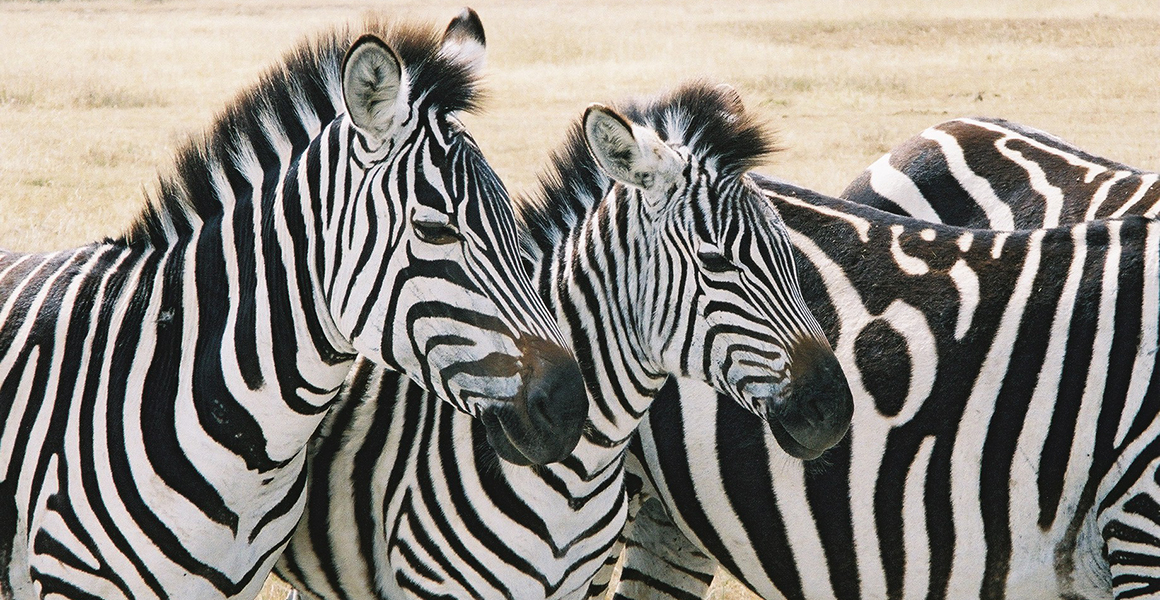
Zebras are famed for their signature black-and-white stripes, which are unique to each animal © Rose Davies, licensed under CC BY 2.0, via Wikimedia Commons
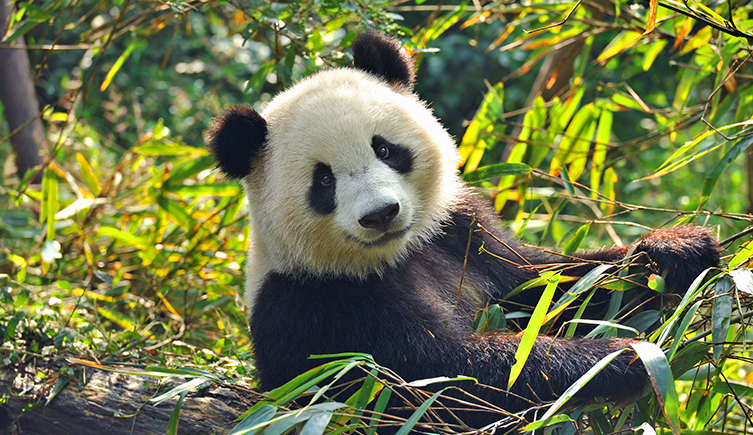
The panda's scientific name, Ailuropoda melanoleuca, literally translates as 'black and white cat-foot' © Hung Chung Chih/ Shutterstock.com
Giant panda (Ailuropoda melanoleuca)
The giant panda, native to the mountains of central China, is a symbol of conservation worldwide.
Pandas have been threatened by their habitat shrinking, but concentrated conservation efforts have increased their population in the wild. In 2016 pandas were downgraded from 'endangered' to 'vulnerable' on the Red List of Threatened Species.
Like other bears, pandas have the digestive system of a carnivore. But their diet consists of around 99% bamboo. To extract enough energy from their food, they have to eat a lot - up to 12.5 kilogrammes of bamboo every day. And because they cannot digest a lot of the plant matter, they defecate more than 100 times per day.
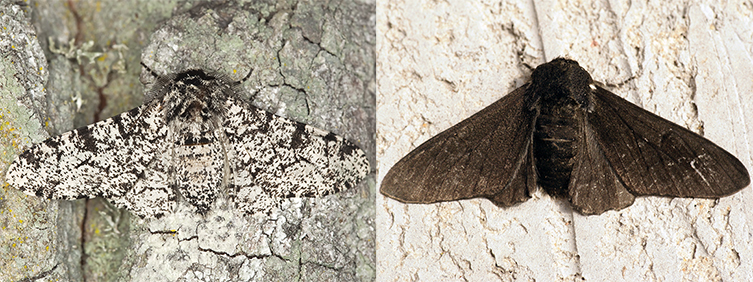
Peppered moth (Biston betularia)
Peppered moths can be white with black speckles, primarily black, or intermediate between the two. The changing proportion of these forms during the Industrial Revolution is one of the most well-known examples of Charles Darwin's theory of natural selection in action.
Until the mid-1800s the light typica peppered moth was the most widespread and familiar. Then in 1848 a darker form, carbonaria, was recorded in Manchester. By 1895 the darker form represented 98% of all peppered moths in this largely industrial city.
The change was due to how well the moths could be camouflaged against tree trunks.
Where the air was clean, bark was pale and lichen-covered, and the whiter moths could hide well from predatory birds. But where the air was polluted and trees were sooty, the black moths fared better. Since the Clean Air Act of 1956, the original whiter moth has been regaining ground.
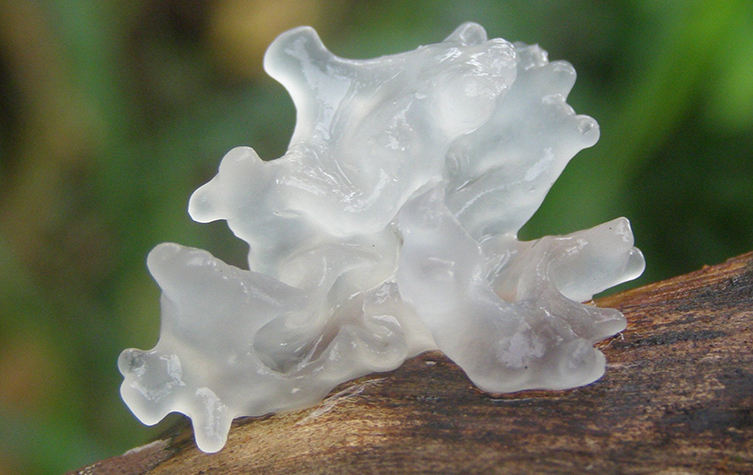
Tremella fuciformis is sometimes referred to as snow fungus, silver ear fungus, or white jelly mushroom © 2011 Eduardo A Esquivel Rios (Eduardo27), licensed under CC BY-SA 3.0
Tremella fuciformis
T. fuciformis is popular in Chinese cuisine. Although flavourless, it is valued for its jelly texture and is used in sweet dishes such as dessert soup and ice cream.
The fungi's edible fruiting bodies are white and nearly transparent. T. fuciformis forms them only in the presence of another type of fungus, particularly its preferred partner Annulohyoxylon archeri and related species.
It's not clear whether T. fuciformis is a parasite on the other fungi, or whether a mutual benefit exists in the combination.
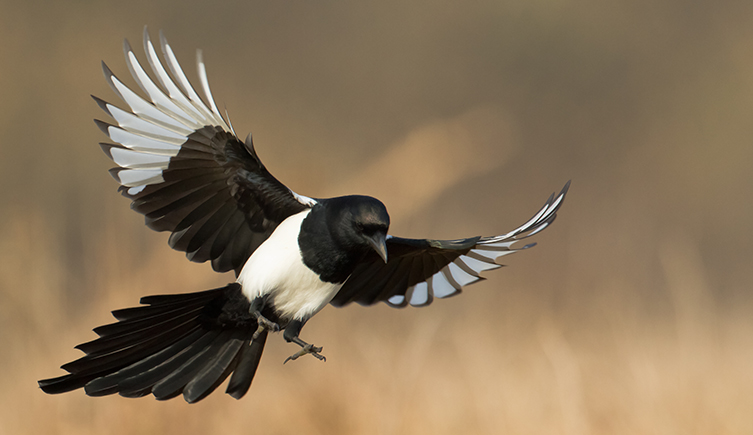
Magpies have been unfairly maligned in European culture as thieves, and are actually highly intelligent animals © Marcin Perkowski/Shutterstock.com
Eurasian magpie (Pica pica)
Well-known for a reputation for liking shiny objects, magpies are also shiny themselves - their glossy black feathers take on an iridescent violet or green sheen when viewed from certain angles.
These characterful birds are the only non-mammals known to be able to recognise themselves in the mirror. However, several members of the crow family, to which magpies belong, have also proved themselves to be extraordinarily intelligent.
Magpies, along with other family members such as ravens, have highly developed social intelligence, including the ability to predict the behaviour of other members of their species. They also show complex behaviours surrounding their food, such as storage and even the ability to cut food in appropriate-sized proportions for their young.
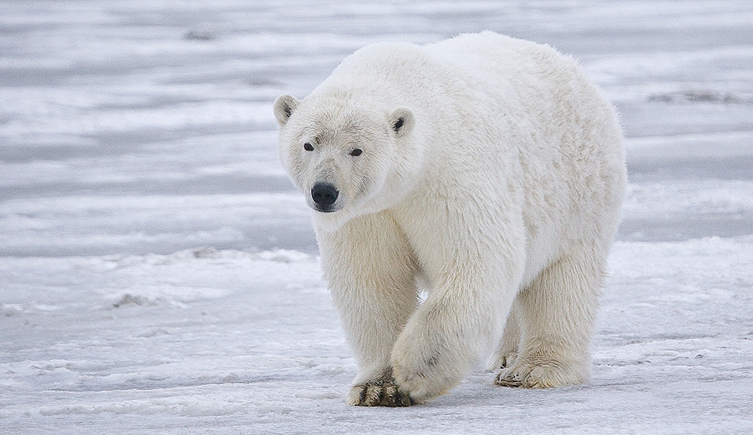
Between moults, polar bear hair can take on a yellow tinge due to the oils accumulated from eating seals © Alan D Wilson, naturespicsonline.com, licensed under CC BY-SA 3.0, via Wikimedia Commons
Polar bear (Ursus maritimus)
Despite appearances, polar bears are more truly black than white. Their skin is black, as can be seen in their snout and nose, and their hairs are actually transparent. The white appearance is due to the hollow nature of the hairs, which scatters light and makes it appear white, in the same way ice and snow appear white.
Like pandas, polar bears are conservation symbols, but unfortunately they are not gaining ground like their Chinese counterparts.
Rising global temperatures are shrinking Arctic sea ice, on which the polar bears depend - the sea ice extent in September has declined 14% per decade from 1979 to 2013.
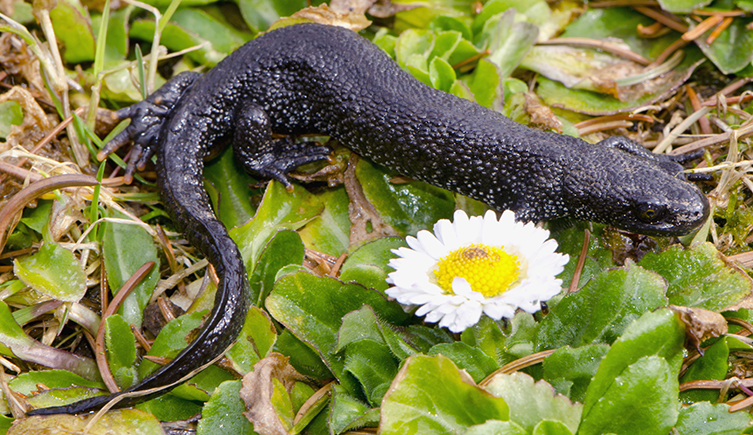
The great crested newt is the largest native British newt, reaching up to 16 centimetres in length © Alis Photo/Shutterstock.com
Great crested newt (Triturus cristatus)
Great crested newts are widespread in northern Europe, including much of the UK, but their populations are rapidly declining due to habitat loss and pollution.
The newt breeds in aquatic habitats - generally medium-sized ponds - but spends much of its life on land, in both rural and urban settings.
Since this amphibian is a protected species, new building developments in the UK must undertake great crested newt surveys if the construction is likely to affect their habitats.
Surveys are traditionally carried out by counting eggs and trapping individuals, but the latest technology is speeding up the process.
Environmental DNA surveys analyse samples of water in likely newt habitats for traces of their DNA, without having to actually spot the newts themselves. This technique is being developed for other key aquatic species such as otters, as well as invasive species like crayfish.
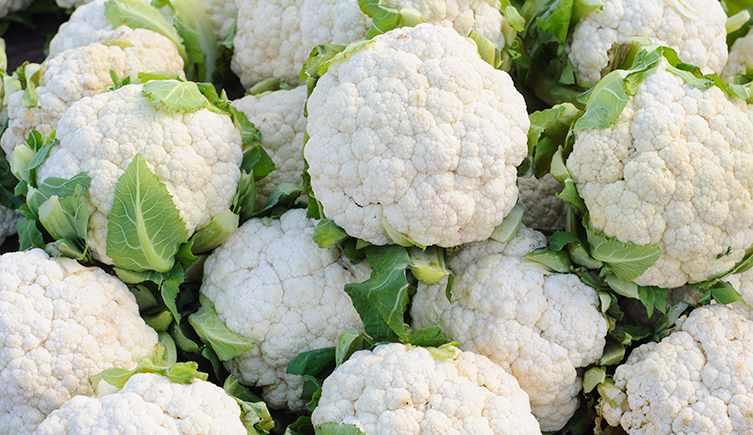
The edible heads of cauliflowers are actually underdeveloped stems and flowers that don't open © YanaG/Shutterstock.com
Cauliflower (Brassica oleracea)
Cauliflowers are temperamental and will only grow large, white heads in consistent, cool conditions.
The white comes from a lack of chlorophyll, the pigment that makes plant leaves green in reaction to sunlight. For this reason, farmers will tie the cauliflower's leaves around the developing head to protect it from the Sun and stop it from becoming green.
Some varieties of cauliflower have increased levels of other pigments (beta carotene or anthocyanins) leading to orange and bright purple cauliflower heads.
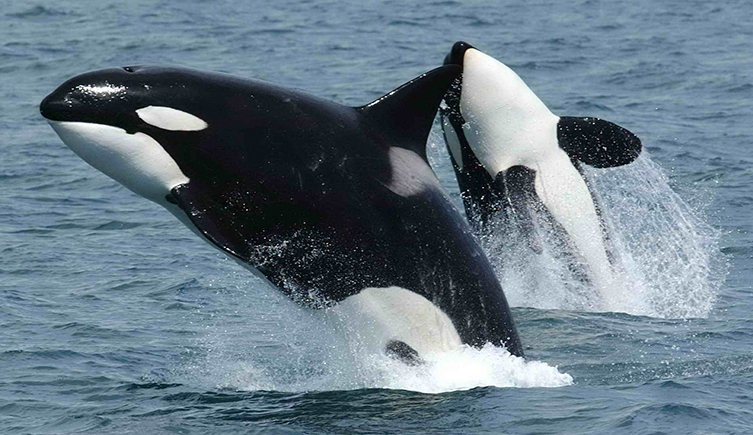
Orcas, commonly known as killer whales, are actually the largest member of the dolphin family. Photo by Robert Pitman (NOAA), via Wikimedia Commons.
Orca (Orcinus orca)
The orca's pale underbelly and dark back is a form of camouflage called countershading.
When viewed from below, the white belly blends better with the lightness of the sky. From above, the black back matches the dark surface of the sea. The shape of the boundary between the black and white also helps break up the outline of the orca, making it appear smaller to its prey.
Rare cases of entirely white orcas have been spotted, including the aptly named Iceberg who was spotted in 2010, in 2012 and most recently in 2016.
Iceberg may be an albino, a condition that causes an absence of pigments, which can affect many animals. But scientists have not yet been able to see whether Iceberg's eyes are the tell-tale pink of an albino animal.
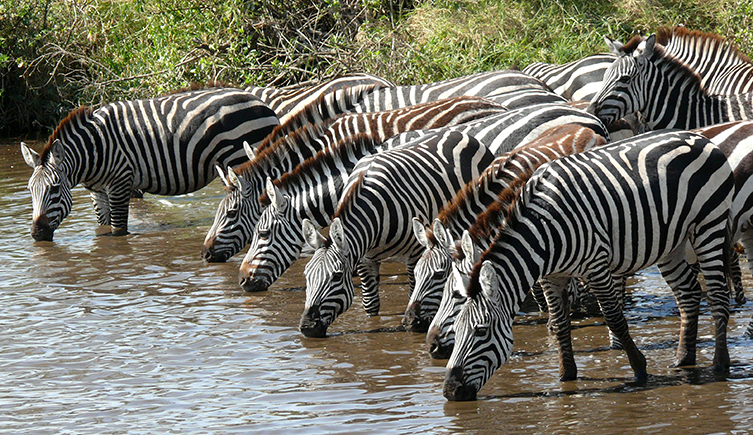
Zebras belong to the horse family. Their distinctive stripes may help to protect them from disease by discouraging biting insects. © Haplochromis, licensed under CC BY-SA 3.0, via Wikimedia Commons
Zebra (various Equus species)
Zebras are one of the most familiar black-and-white animals. Each species has its own general stripe pattern, but the exact pattern is unique to the individual, like a fingerprint.
There are various ideas as to why the stripes evolved, including that they play a role in camouflage, confusing predators, social recognition, discouraging biting flies and temperature regulation.
In 2016, scientists published the results of a study that simulated how zebras appear to lions and spotted hyenas in different lighting conditions and from different distances. The findings contradict the long-running idea that the stripes camouflage zebras from their predators.
Although the debate over the function of the stripes continues, studies have backed up some of the other suggestions. Zebras in warmer areas have more stripes, for example, and biting flies such as horseflies avoid landing on black-and-white striped surfaces.
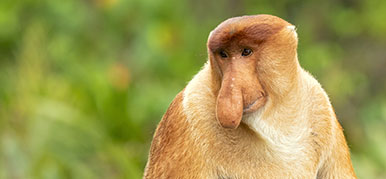
What on Earth?
Just how weird can the natural world be?
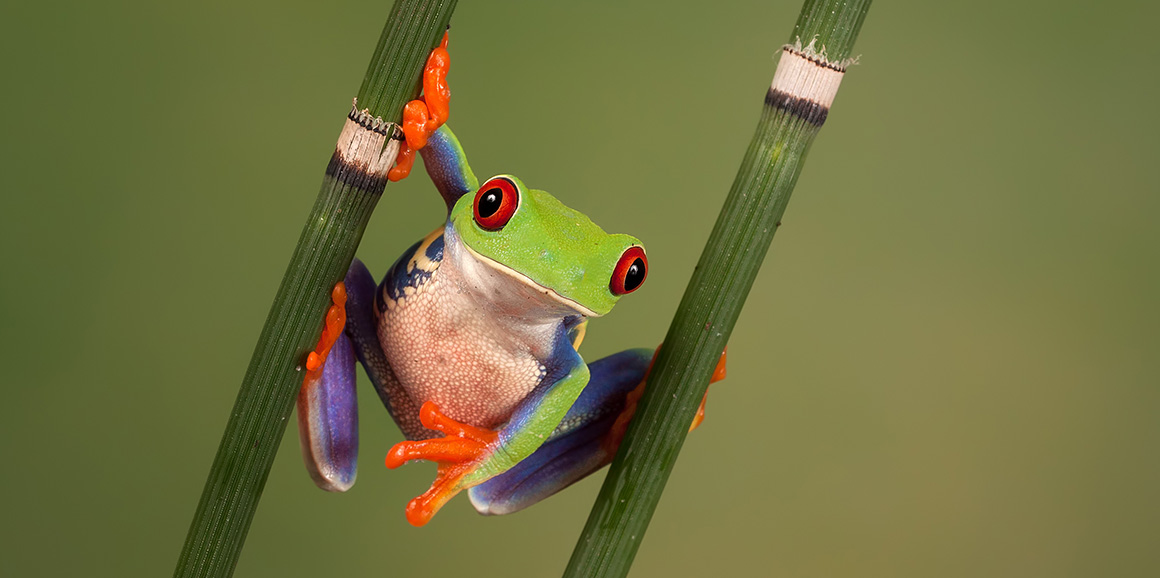

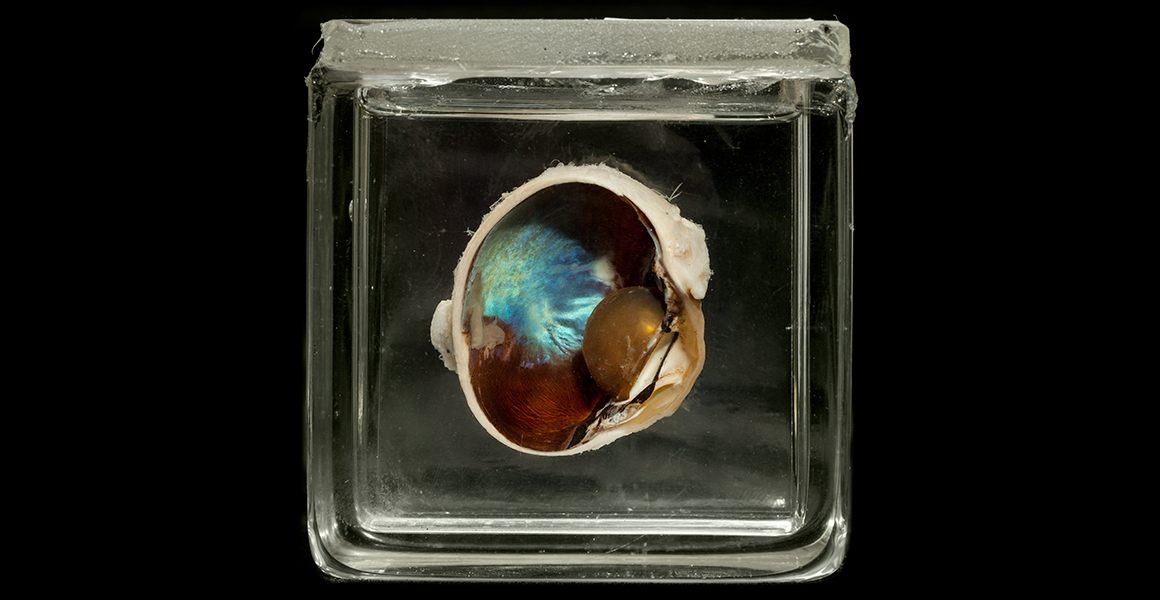

Don't miss a thing
Receive email updates about our news, science, exhibitions, events, products, services and fundraising activities. We may occasionally include third-party content from our corporate partners and other museums. We will not share your personal details with these third parties. You must be over the age of 13. Privacy notice.
Follow us on social media